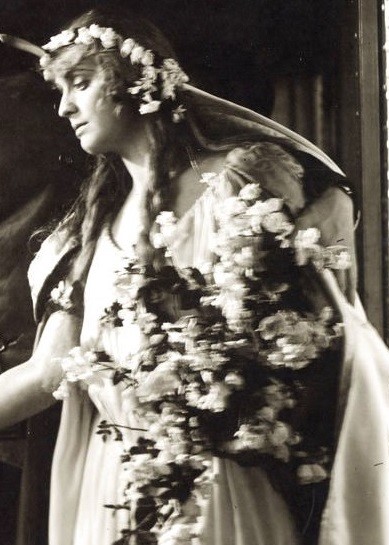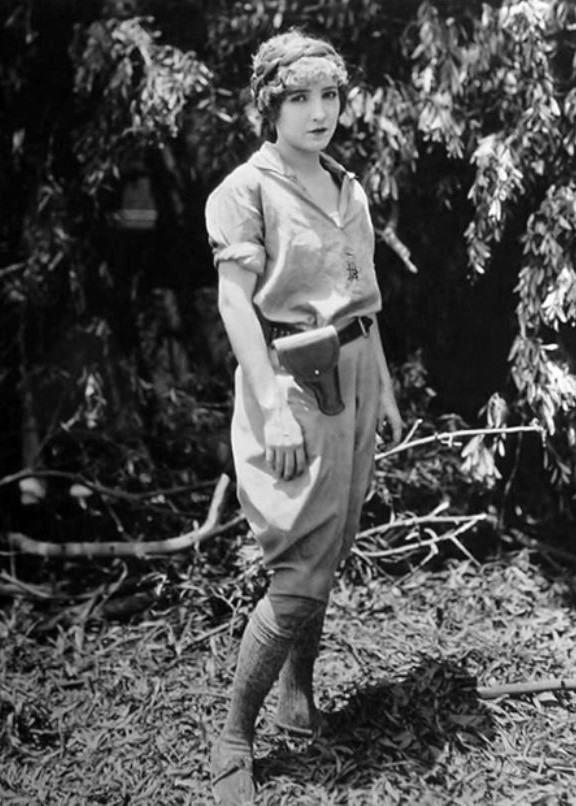A Brief History Of Sci Fi Babes
Just where did the sci-fi babe phenomenon start? Who was the first character we could call a sci-fi babe?
The answers to these questions lie in the origins of science fiction itself. Find the first examples of science fiction, locate the female character appearing in them and see if they are worthy of the "babe" title. Sounds simple doesn't it?
I could discuss the origins of science fiction all day long. It is not really the intention of this web site to answer that particular debate (we are interested in the babes here), although it is true that we will certainly savour the genre itself along the way.
However, from the point of view of scifibabes.co.uk, science fiction began in the late 19th century, when the Novels of Jules Verne and H.G. Wells were being published. I will focus on film for now as this is the main medium for this web site and hope to include other media later.
So who was the first sci-fi babe?
Depending on your point of view, film was pioneered by either Thomas Edison, in 1891, who made and showed the first "moving picture", or it was the Lumière brothers who brought it to the "masses". Either way, it was in the late 1800s when film began to be made and shown.
The first recognised Sci-fi film of any length, Le voyage dans la lune, which was shown in 1902, included a bevy of beauties from the chorus girls of the Folies Bergères. Anyone of those could have been the first sci-fi babe. But they were only on hand to decorate the sets and represented stars and planets, rather than specific characters, unless you want to include "the lovely vision of Venus on a crescent" or a couple of "charming young girls holding up a star"? Here are some of the Folies, who came to the astronauts in a dream...

Voyage Dans La Lune - 1902
Georges Méliès, who made over 500 films, and was undoubtedly the pioneer of sci-fi films, followed this up with a number of science fiction films in the next few years but with no noticeable female character to speak of.
In 1916, George adapted the Jules Verne Novel and made 20,000 Leagues Under the Sea. Jane Gail starred as the wild woman abandoned on an island as a child and was certainly a starring character. You don't get to see much of her as her hair covers her face most of the time, but its fair to say she didn't, and won't, win any beauty prizes, and certainly not the coveted prize of first babe of sci-fi.
Staying in France for a while longer (the land of the Lumière brothers), René Clair made the 1925 film, Paris Qui Dort, about a scientist who invents a ray gun that makes you fall asleep. Everyone except the watchman at the Eifel tower and a small group of air passengers, that is. This group included a female passenger, Hesta, played by Madeleine Rodrigue who, for a short time at least, became the only available woman in the world. This image taken from the film is actually very flattering to the actress, but it does brighten up our pages...
But wait, who would believe that in 2006, a long-lost missing sci-fi film would be found...in Denmark? The film in question is Himmelskibet, a Science fiction film made originally in 1918 and restored to a very fine quality. The film is set on Mars and the babe in question is the Martian leader's daughter, Marya, played by Swede Lilly Jacobsson.
Perhaps the most iconic science fiction film pre-1930 and possibly the most iconic female in early science fiction was Fritz Lang's Maria, who featured in Metropolis in 1927. Maria appeared in two forms, human and a robot, and was played by German actress Brigitte Helm.

Hesta - Madeline Rodriguez
Filmed in 1925, could this be the first sci-fi babe on film?

Marya - Lilly Jacobsson
Himmelskibet, a Science fiction film made originally in 1918

Maria - Bridgette Helme
Fritz Lang's classic Metropolis, filmed in 1929 starred the german actress as the lead role.
There is another candidate worthy of a challenge and she can be found in another of Lang's films, Frau im Mond (1929), or "Girl in the Moon" as it was known in America and the UK. Whilst Metropolis earns the greater recognition, this lesser-known film featured a very pretty actress, Gerda Maurus, who played Friede Velten.
But Metropolis was screened 2 years earlier than that...
Now, there was a film made in 1925, called Lost World, from the story by Arthur Conan-Doyle. In it starred a lovely actress called Bessie Love, who has made over 100 films, and she played the newspaper magnate's daughter, Paula White.
Notwithstanding the look of the era, the character herself is a bit drab and I wouldn't classify Paula as a babe. Watch the film though, it's a remarkable movie considering it was made in 1925 and the audiences at the time must have found it quite exceptional.

Friede Velten - Gerda Maurus
From the 1929 film, Frau Im Mond

Paula - Bessie Love
From the 1925 film, Lost World
So, who was the first sci-fi babe?
Now that depends on your point of view. I've said in my blog that being a "babe" requires certain qualities. One of these is to be visually stunning. It's fair to say that stunning babes in film were thinly distributed prior to the sexual emancipation of women in the 1960s and weren't exactly portrayed as sexy or erotic, so we do need to take context into account.
But, for me, the first sci-fi babe was the robot Maria, from Metropolis. My main reason for this is that she is "deliberately" designed to be sexy rather than just appealing, as the other candidates are. She has all the bumps and curves in the right place and a wide-eyed facial symmetry that pulls at the primeval strings...

 Who was the first?
Who was the first?
In an effort to track down the very first sci-fi babe, I've had to delve into the very earliest of films. This section takes a look at women in science fiction prior to the 1930s - and you might be surprised who I've picked as my choice...
Other Posts
-
 The Batman Question
The Batman Question
Is Batman science fiction? -
 Is jessica Alba a sci-fi babe?
Is jessica Alba a sci-fi babe?
Why I think she isn't -
 A brief history of scifi babes
A brief history of scifi babes
Who was the first scifi babe? -
 The Women of Star Trek
The Women of Star Trek
To boldly go... -
 The Women of Marvel and DC
The Women of Marvel and DC
A comic inspiration -
 Dr Who companions
Dr Who companions
Well, at least the female ones -
 The story of Barbarella
The story of Barbarella
My view on a classic -
 Alice
Alice
et al